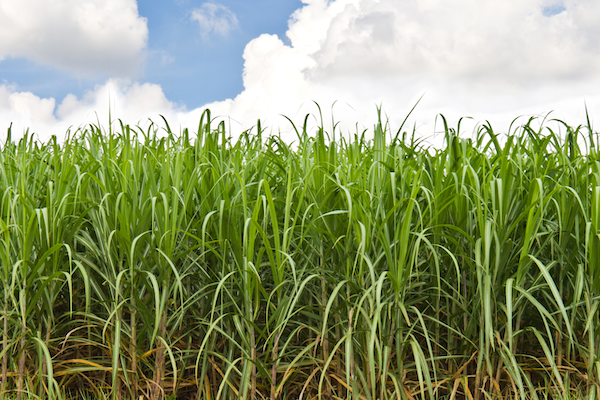Renewable Materials Offer Opportunity To Meet UN Goals
By Jason Pelz | Vice President, Sustainability, U.S., Canada, Central America and Caribbean Tetra Pak

Originally published on GreenBiz
Sourcing renewable materials is an important — and often overlooked — way to reduce the carbon footprint and climate impact of your products. If you can take a fossil-based substrate and replace it with something renewable, something that regrows and is responsibly sourced, you’re often able to reduce the carbon footprint and overall environmental impact of your product. Often without having any noticeable impact on the quality of the product itself.
Companies tend to have a high level of focus on the end-of-life sustainability of their products — and rightly so. But the beginning of life and sourcing of materials, including how they are grown, harvested or extracted, and if that material is renewable and responsibly sourced, can have a significant impact on the overall sustainability of your products and carbon footprint.
According to Stora Enso, a global provider of renewable solutions in packaging, biomaterials, wooden constructions and paper, its product lifecycle analyses show how renewable materials reduce carbon footprints. In 2019, their products saved an estimated 20 million tons of carbon dioxide by substituting for fossil-based materials.
Renewable materials and SDGs
Since the United Nations Sustainable Development Goals (SDGs) were adopted in 2015, responsible and socially conscious businesses across the globe have identified how they can align with them.
My colleagues and I at Tetra Pak have identified 11 SDGs that we’re actively working on. As a food and beverage processing and packaging solutions provider, we’re committed to making food safe and available, everywhere, combating hunger (SDG 2). In terms of climate action (SDG 13) and responsible production (SDG 12), we aim to launch a fully renewable shelf-stable package by 2023.
In addition to a more sustainable future, there are business benefits to aligning with the SDGs. According to a Morning Consult survey, "Companies that make a public commitment to SDGs are seen as caring about customers and the community, but the intent needs to be genuine, as there is skepticism." Luckily, there are ways businesses can ensure their renewable materials sourcing is credible — and verifiable.
Switching to materials from renewable sources that are sustainably and responsibly managed can specifically play a role in meeting SDGs 12 and 15.
Goal 12: Responsible consumption and production
This goal recognizes that unsustainable patterns of consumption and production are the root cause of climate change, biodiversity loss and pollution. Sourcing renewable materials that are responsibly managed can support biodiversity and reduce carbon emissions, thereby lowering climate impact.
One measurable target (12.2) is to "achieve the sustainable management and efficient use of natural resources" by 2030. Renewable resources play an important role in this goal related to material footprints. And businesses can do their part.
Keep in mind that consumption means different things for different products, and it happens at many stages of the value chain. There are raw materials that get consumed by manufacturers to make other materials. Those materials get turned into clothing, food or other products. And then there is the ultimate consumption by the consumer.
Goal 15: Life on land
This goal is focused on protecting, restoring and promoting sustainable use of our land. Twenty-five million acres of forest are destroyed every year, with almost 90 percent of global deforestation due to agricultural expansion. Renewable resources such as sustainably managed forests can support biodiversity and provide important habitats for animals.
Business considerations for renewable materials
For businesses looking to meet SDGs 12 and 15 and interested in sourcing more renewable materials, keep two important considerations in mind.
1. Certification & traceability is key
Renewable resources are only renewable if they are sustainably and responsibly managed. Depending on the material, there are a variety of third-party certifications that verify the authenticity and sustainability of resources and trace them throughout the value chain. For example, Tetra Pak uses paperboard from Forest Stewardship Council (FSC)-certified forests and other controlled sources to ensure sustainability and traceability.
Many other third-party certifications exist, depending on the material. From sugar cane for plant-based polymers to wool for clothing, these certifications offer traceability and authentication to ensure that the collection of the material isn’t doing harm to the environment and is in fact sustainable.
2. Quality, safety and convenience are non-negotiable
It almost goes without saying, but in the switch to renewable materials you should never compromise on quality.
In my world, we’re focused on packaging that protects the quality of the food or beverage within. We introduced the world’s first fully renewable package in 2015, and this year, we’re testing the industry’s first fiber-based barrier to replace the non-renewable aluminum barrier in shelf-stable cartons.
While we continue to innovate more ways to ensure we’re creating the most sustainable package we can, we must never compromise on food safety or the consumer’s experience with our package.
Innovation still needs to meet consumer needs the same or better than what they expect. Because if a product doesn’t meet consumer needs, or it’s not as convenient, or they just don’t like it as much, they’ll pick another product.
Businesses seeking to reduce their climate impact and align with the SDGs have a responsibility to look not just at the end-of-life of their products, but at the whole life cycle, including the materials that go into their products from the very start and throughout. Renewable materials offer an opportunity to create products that meet consumer demands in a low-carbon, low-impact way.

